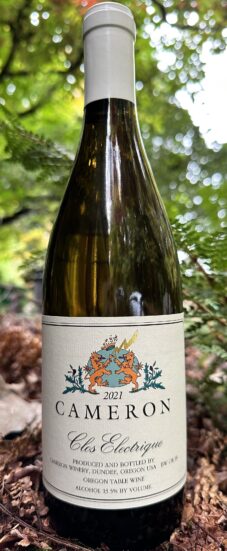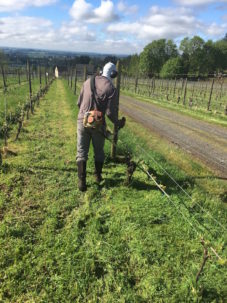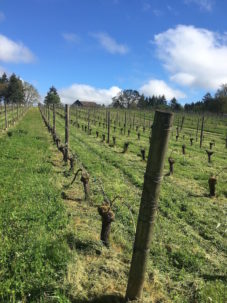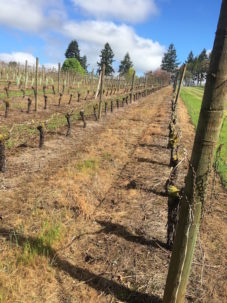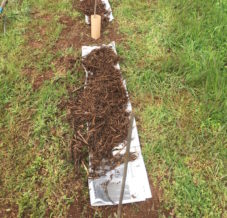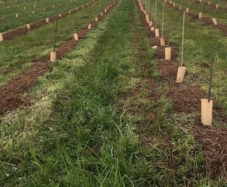A Natural Wine Begins in the Vineyard
From John, May 10th, 2017The quality of a wine has everything to do with the health of the vines from whence that wine comes. And the mileau within which the vines grow has everything to do with that health.
From the cover crop that grows throughout the vineyard to the microflora in the soil, everything exerts an influence on the final product. Even driving a tractor in the vineyard can compact the soil, affecting aeration and drainage. This in turn impacts the growth of microflora beneficial to the roots of the vines. Therefore, at Cameron Winery, after winter pruning, we remove all of the prunings from the vineyard by hand so that we do not have to introduce a tractor with an attached mower or flail to chop them up when the soil is wet and more compactable.
Influencing what grows in the vineyard (besides vines) and where it grows is a critical part of the process of creating a healthy environment. While we seed with various types of cover crops (clover for nitrogen, buckwheat for phosphorus mining, mustard for drainage and killing nematodes, to name a few) controlling their growth under the vines is always an issue.
We have generally opted over the years to hand mow underneath the vines although this is incredibly labor intensive (see photo).
The alternative, which a majority of vineyards tend toward, is the use of herbicides, of which Roundup (Glyphosate) is by far the dominant player. Glyphosate is a class 2A carcinogen according to the World Health Organization, and has been linked to several types of lymphomas. In the soil, there is evidence that glyphosate is quite toxic to soil bacteria and therefore also inhibits nitrogen fixation by cover crops such as clover and interrupts other important microbial activities in the soil. At Cameron Winery, we are clearly not fans of Roundup and are clearly committed to looking for alternatives.
At the Ecofarm Conference this year, we were introduced by noted root specialist Robert Kourik (the author of Roots Demystified) to a method of mulching. Newspaper is placed under the vines as a base on which we place chipped up vine prunings (see photos below). This is in the experimental phase at this point but we are hoping that it can replace mowing under the vines at least in part. We are also experimenting with no-till techniques to help preserve soil biology, a topic for a future rant.
In the end it is clear that truly healthy vineyards as well as other forms of healthy agriculture require a lot of love and labor. But I can tell you that nothing is more enjoyable than working in and being a part of a healthy vineyard.
- hand mowing the vine row
- Clos Electrique Vineyard
- A vineyard sprayed with Roundup
- newspaper & chipped vine mulch
- mulched vine rows
Recent News & Rants
old vines, old wines & an old winemaker
One of the advantages of being an “old-timer” in the world of enology and viticulture is that our vines have aged along with me. It is a well known phenomenon in the world of wine that old vines tend to produce superior wine. A recent tasting of 18 vintages of Clos Electrique Blanc magnums proved that adage to be true! Overall, the consensus was that 8-14 years of aging seems to be the absolute “sweet spot” for this magnificent vineyard.
There’s More... >What do winter cold snaps do to the vineyard?
With climate progressively changing, one phenomena that is starting to occur fairly regularly is an occasional bout of intense winter cold weather. In January 2024, temperatures descended to as low as 4F in high altitude vineyards. Read on to learn how grapevines respond to this stress.
There’s More... >Cheers to a fantastic year ahead!
Bottles of Cameron Winery wine that are currently for sale.
2022 Dundee Hills Chardonnay, 2021 White Oak Pinot noir, 2021 Abbey Ridge Pinot noir, 2021 Clos Electrique Rouge, 2021 Clos Electrique Blanc, 2022 White […]
There’s More... >